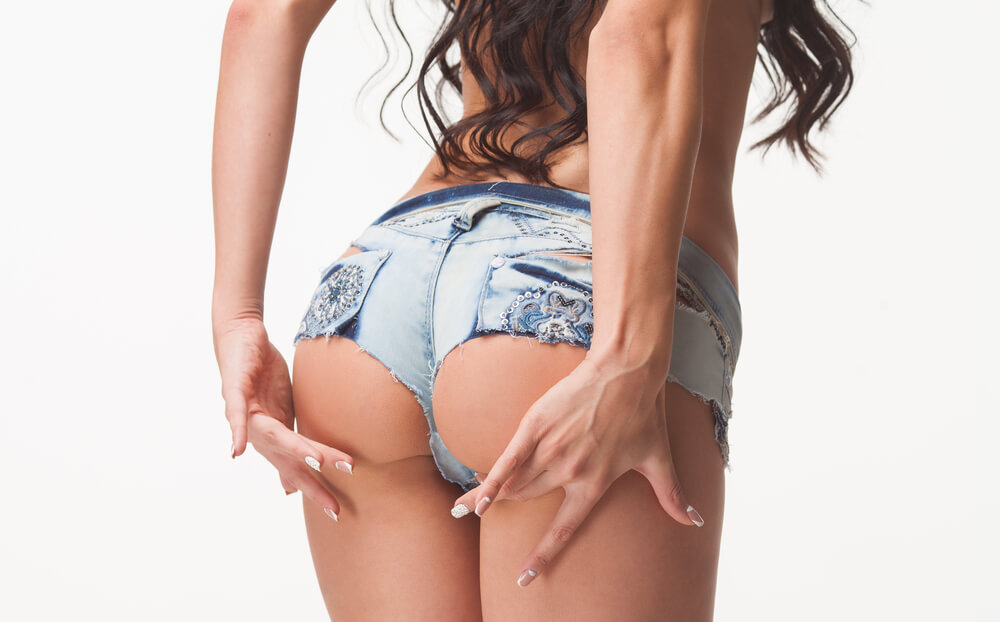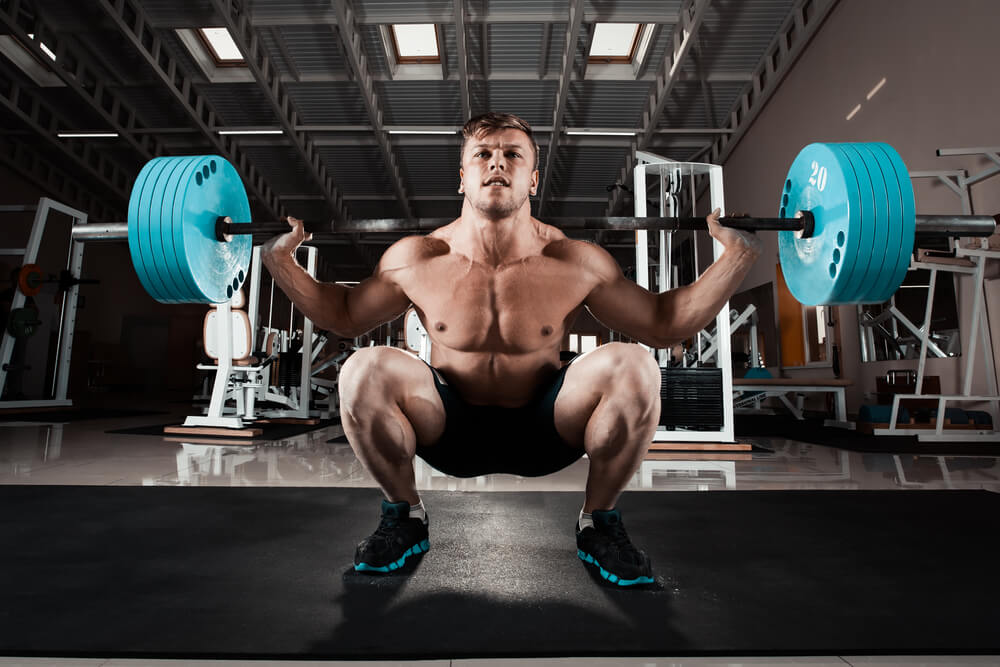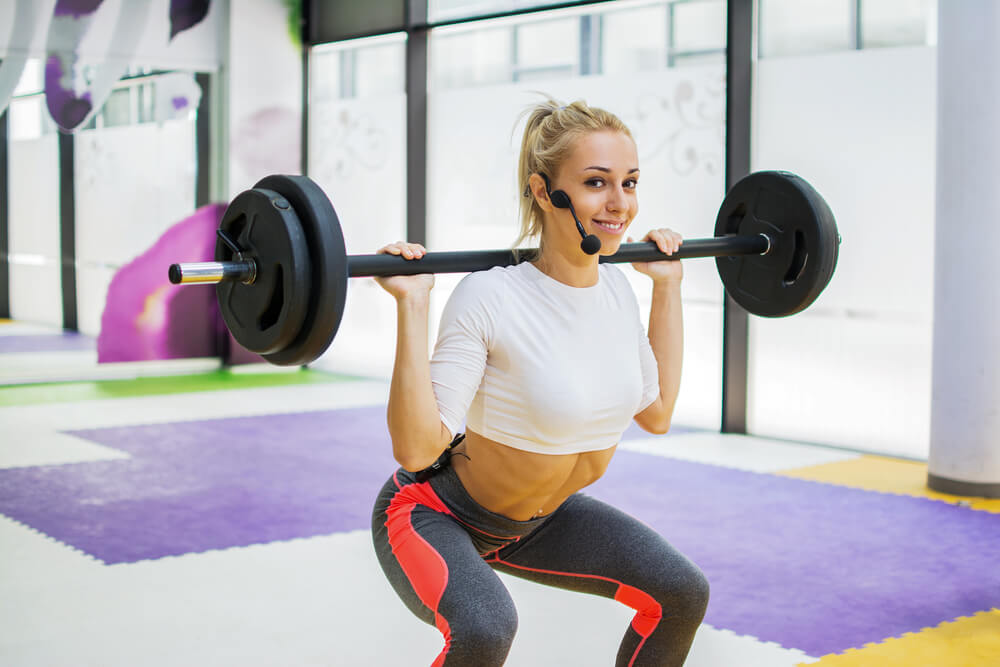
Want to boost your squatting ability? Do you know where to start? We do! And, lucky for you, we are more than willing to let you in on it. Read on to find out more!
Are you up for a squat challenge?
Squat challenges are designed to give you something to accomplish while sticking to a set workout program. This is also appealing to those who have similar goals as their friends and just want to compete with each other, and will answer the obvious question do squats really work? Regardless of why you choose to compete in this squat challenge, the outcome should be a strong set of legs and core. Your muscles should definitely see some growth, but the overall power and strength should be your main concern.
If you can move enough resistance during the squat, then you will definitely experience muscle growth and see definition.
Are you ready to see what the challenge is all about?
If so, then let’s dive right in!

These Are The Primary Benefits Of Squats
Want thick muscular legs and strong abs?
That seems to be what most people think of when the idea of a squat challenge comes up, but the truth is that there is much more to squats than just physical looks. The squat is the most effective exercise for training regardless if you want strength, size, definition or just functional boosts.
Remember, squatting to pick up an object and then standing up under resistance is essentially a daily task. That is why performing a squat is even recommended for those in their senior years as long as they have been cleared medically. Of course, that’s with resistance, if possible!
Among the many benefits of doing squats, what follows are some of the key ones:
- They increase hormone release such as testosterone.
- They target your body as a whole.
- They functionally prepare your body for day-to-day movements.
- They condition your muscles and joints to prevent many injuries.
- They make you look cool if you’re doing them properly with a decent load.
All of these reasons are definitely good enough for anyone to want to include squats in their training programs. In fact, athletes always perform this exercise because it is just that good.
Do you want strong legs?
Then start performing squats!

Choosing Compound Lifts Over Isolation
In all honesty, isolation movements are not really even needed unless you want to develop specific muscle gains. Functionally speaking, doing compound exercises are more than enough to strengthen your body as a whole.
Squats are a compound movement.
How so?
You use multiple joints and muscle regions to achieve the task. Other such exercises include the bench press, overhead press, deadlift, kettlebell swings and variations of these movements. For example, you have the regular barbell squat that most know about. Then there are front squats that are awesome and focus a little more on your quads.
Being in a squat challenge means you will definitely be getting a leg workout for mass. With that said, even though isolation lifts are not needed, the plan is for you to use them to boost your squatting ability.
Why use them?
They will enable you to squat deeper and with more resistance.
These Exercises Should Increase Squat Performance
Part of this squat challenge is using different exercises and methods to boost your squat performance. The reason you choose to compete in a squat challenge could be to have a stronger body, create definition or simply correct having chicken legs. Regardless, this challenge should be able to get you in shape and strengthen your physique.
One exercise that helps people quite a bit is doing squats with weights under the back half of the feet. This allows your shins to move in a more natural range of motion while also creating emphasis on your quads. The downfall of this is that some people may experience knee pains by doing this exercise.
Why does this happen?
Their body type does not match with the exercise. Most will not run into this issue. With that said, you should definitely go easy on the resistance when first doing this.
Another not so common exercise we will be adding into the squat challenge is the close stance squat. This type of squat is performed with your feet about hip-width apart. In other words, you will be doing it with only a few inches of space between your feet. The main focus for this movement is placement on the quads without having to do a front squat.
Romanian deadlifts also help keep your squat challenge alive. Don’t forget: Deadlifts are strong compound exercises that help build hip strength and leg power. This version is different.
How so?
The weight does not actually touch the floor between reps. Of course, normally deadlifts are straight from the floor.
However, this movement is focusing on trying not to use your lower lumbar region and instead relying on hip and upper leg strength. You can even start with the bar raised from the floor and completely bypass the need to completely squat down. Remember, Romanian deadlifts are always performed with a bend in the knees. They are not to be mistaken with stiff legged deadlifts.

The Proper Squat Form And Technique
This squat challenge is not only just about seeing the different exercises and volume needed. Performing the squat properly and with good form won’t only keep your body from being injured, it will also increase strength and muscle gains.
The best method is when you squat below parallel. This is called a deep squat. This technique will work to increase the muscle and its strength. It will also help with flexibility. Of course, not everyone can go straight into a deep squat.
That’s why you have to increase your flexibility along with your strength in order to be able to squat appropriately. Every week or so you should be able to squat lower and lower until it is nice and deep.
At the start you will most likely only be able to squat a quarter of the way due to tight hamstrings. Over time flexibility is definitely going to get better unless you are doing something wrong.
Another factor to consider is mind muscle connection. You definitely want to make sure that you focus on the muscles that matter most during squats and contract them. Which muscles? The main ones are your quads, glutes and abs muscles.
Squeeze them tight!
When it comes to foot placement, you need to be aware that this has a major effect on your performance. You want to begin by having your feet shoulder-width apart and slowly start to shift back and forth from each foot. After a few seconds, you should stop and see where your feet are.
Generally, this is going to put your feet in the correct placement for your body and your toes should be slightly angled outwards as well. Having your feet pointed forward can hurt your knees if your hip is not aligned to follow this pattern of movement.

The Squat Challenge Workout Routine
If you’ve made it this far, you should have the knowledge of what is required of your squats. This workout is designed for you to follow for up to four weeks since it is a specialized program.
Your upper body muscles will receive enough training to be maintained, but your focus is going to be on squats and boosting your strength and performance with them. So let’s take a look at your training challenge to get you started in the right direction.
Any exercise that has only x5 reps listed should be done with heavy resistance. Any exercise that is listed as 8 to 12 reps should be done with moderate resistance. There are no light exercises for this squat challenge. The end result after four weeks of use is enhanced squatting capabilities.
Day 1 Is For Legs And Glutes
Exercise Sets Reps
Barbell Back Squat x5 x5
Stiff Legged Deadlift x5 x5
Barbell Hip Thruster x3 x8-10
Leg Press x3 x8-10
Day 2 Is For Chest And Back
Exercise Sets Reps
Incline Dumbbell Press x5 x8-10
Dumbbell Cable Flye x3 x8-10
Barbell Bent Over Row x5 x8-10
Lat Pulldown x3 x8-10
Day 3 Is For Legs And Calves
Exercise Sets Reps
Front Squat x5 x5
Sumo Deadlift x5 x5
Leg Curl x3 x8-10
Standing Calf Raise x3 x10-12
Day 4 Is For Shoulders And Arms
Exercise Sets Reps
Dumbbell Push Press x5 x8-10
Kettlebell Upright Row x3 x8-10
Overhead Triceps Extension x4 x8-10
Dumbbell Biceps Curl x4 x8-10
Day 5 Is For Legs
Exercise Sets Reps
Sumo Squat x5 x5
Close Foot Squat x3 x8-10
Romanian Deadlift x5 x5
Leg Extension x3 x8-10
Day 6 Is For Rest
Day 7 Is For Rest
As you can see, when it comes to performing compound lifts mixed in with heavy training, not many exercises are needed on any given day. Know your body.
Why?
You need to know just how much weight to throw on so that you can avoid an injury.

Here Are Some Tips On Staying Safe During The Squat Challenge
The squat challenge isn’t meant to be easy, but by no means should you be unsafe about it either. You definitely need to be aware of how much your body can move before throwing on a heavy load.
And if you ever need variations you can check out goblet squat or zercher squat.
You can do this by either doing a max out with a spotter, or by performing a heavy based exercise for several reps instead of just once. After you find the most amount of weight you can move for squats or deadlifts, you should then use 80 to 85% of that one rep max for your 5×5 sets.
The next step you should take is to invest in some lifting gear that helps keep your joints happy while also increasing your lifting potential. This gear includes a lifting belt, knee braces, wrist wraps and lifting shoes.
The lifting belt is great for protecting your lower spine as it causes your core muscles to contract. When that happens, your spine is protected. This is all through abdominal pressure from the belt.
Of course, the lifting belt is not the actual thing that keeps your lower back pain-free.
Knee braces are great because they place pressure on your knees, but at the same time keeps your joints warm. The synovial fluid within your knee joints functions better when kept at warmer temperatures.
Wrist wraps are simply wrapped around the end of your palm and on your wrist. They are not to be confused with wrist straps. Powerlifters usually wear wrist wraps when doing squats. This is because your wrist naturally bends when you wrap your thumb around the bar. If you don’t like wearing them, you can squat without gripping your thumbs around the bar, but this is not the safest option. Always lift using the safest method possible.
Lifting shoes are important because they help you keep balance and absorb the shock coming from the floor. Squat shoes are expensive and most likely not needed unless you’re planning on getting into some serious competitions. Those that squat over 600 pounds know that you feel little difference. However, you should consider investing in a nice pair of Chuck Taylors since they are flat-footed and have little cushion to maintain better weight distribution.

Conclusion
You’ll definitely notice strength gains during this squat challenge. Along the way, you should be increasing the amount that you’re lifting each week by 2.5 to 5 pounds. If you’re new to training, you may find that you experience quick results. Remember that in three to four weeks it would be a good idea to stop the squat challenge training program and begin a different training program that also focuses on upper body muscles.
By Brian Pankau, CPT
Terry
Latest posts by Terry (see all)
- How Important Are Net Carbs For Building Huge Muscle? - Apr 28, 2017
- The Matt Damon Workout Explained - Apr 27, 2017
- Watercress – Benefits And The Best Way To Consume It - Apr 26, 2017









This is by far the most detail and well research article on the benefits of squatting. It’s such a foundational exercise for overall development that I can’t fathom any exercise protocol being effective without them:
[…] We are all about squats here at Gym Junkies. Men, women…everyone loves a good squat. […]
[…] We are all about squats here at Gym Junkies. Men, women…everyone loves a good squat. […]
[…] another exercise you need to be doing already. The squat is king of the lower body […]